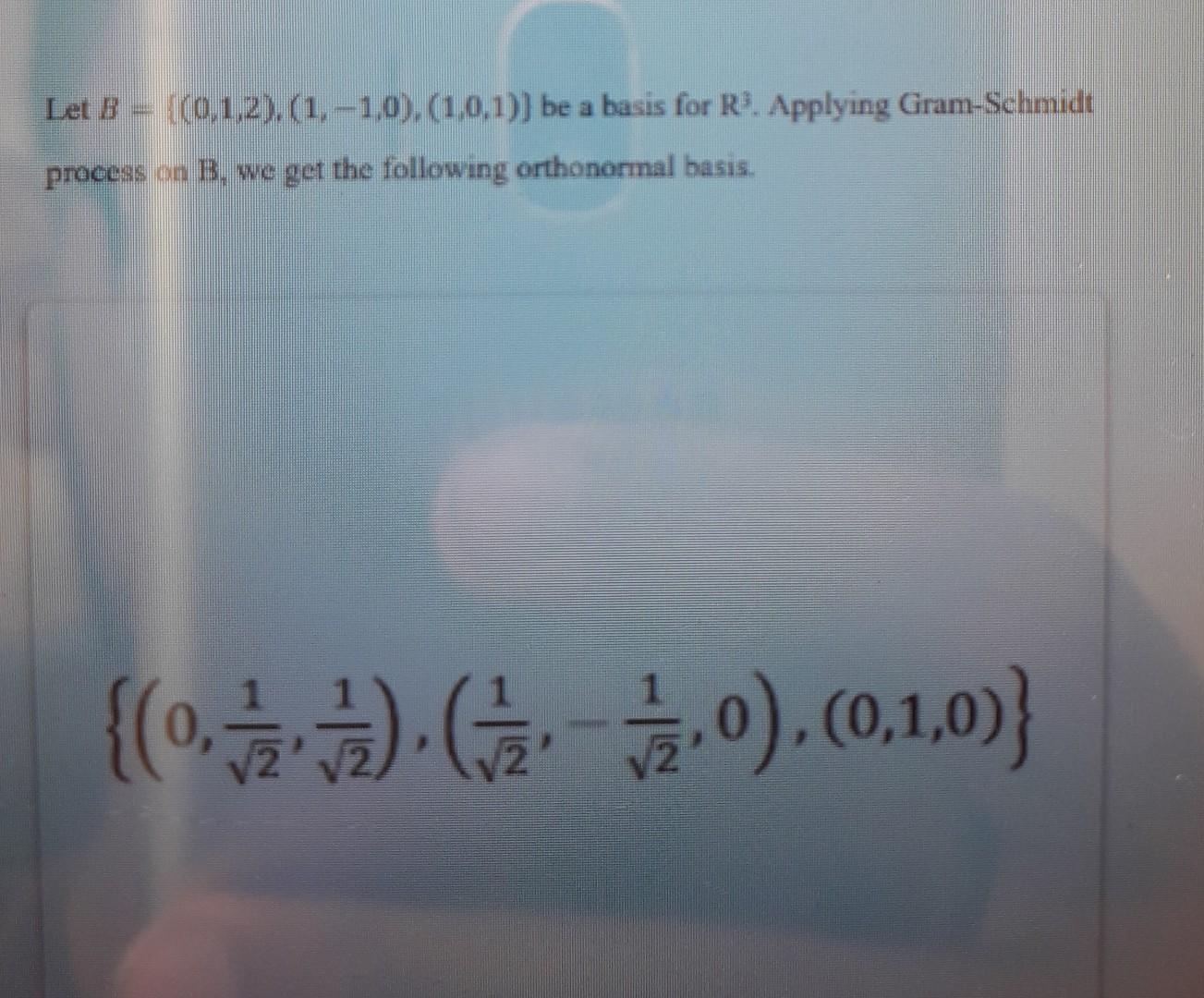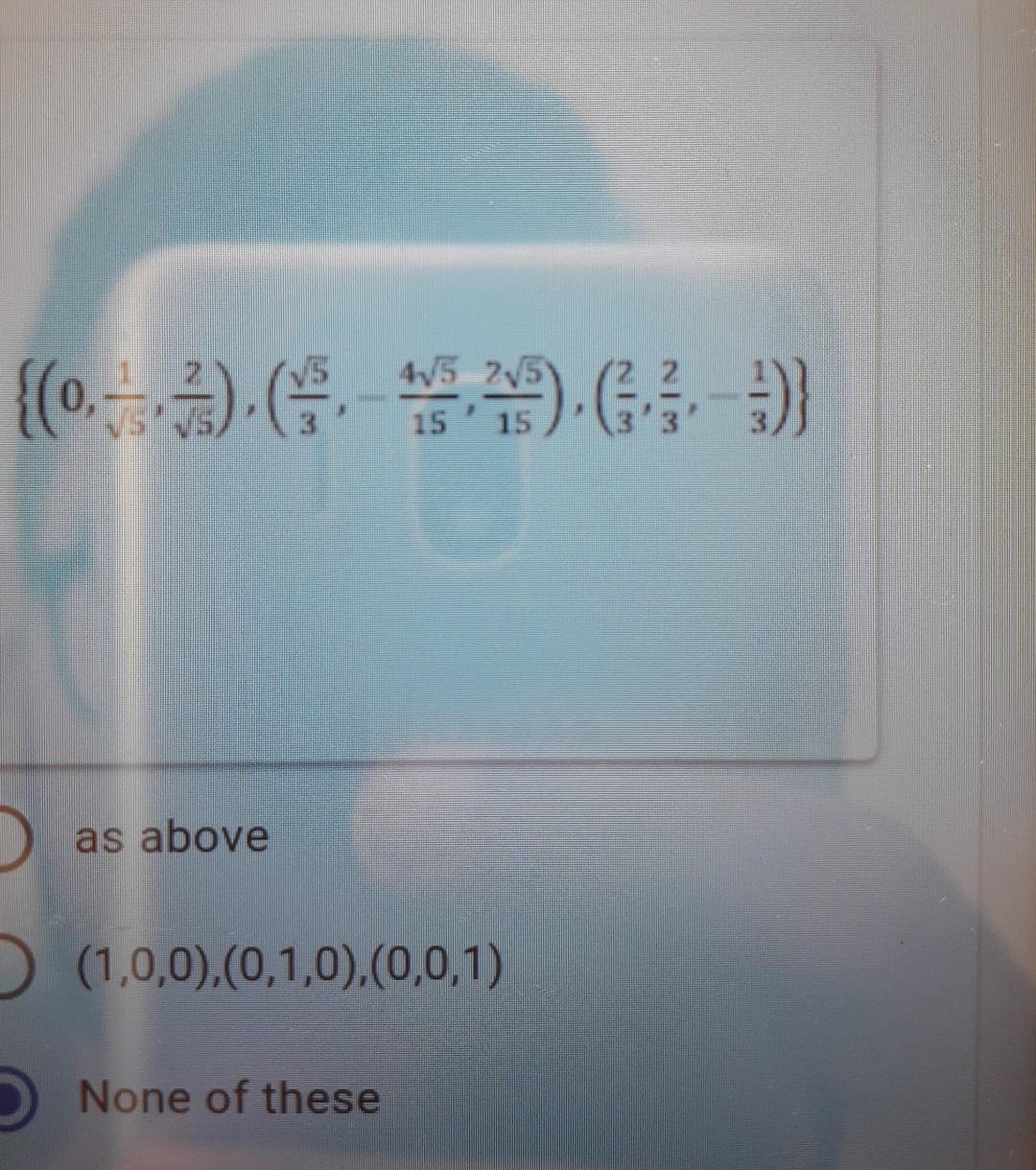Answered step by step
Verified Expert Solution
Question
1 Approved Answer
Let B= ((0,1,2),(1,-1,0), (1,0,1)) be a basis for R. Applying Gram-Schmidt process on B, we get the following orthonormal basis. {coro) (0*))} 4V5 2V5


Let B= ((0,1,2),(1,-1,0), (1,0,1)) be a basis for R. Applying Gram-Schmidt process on B, we get the following orthonormal basis. {coro) (0*))} 4V5 2V5 15 15 as above (1,0,0).(0,1,0),(0,0,1) None of these
Step by Step Solution
★★★★★
3.42 Rating (158 Votes )
There are 3 Steps involved in it
Step: 1

Get Instant Access to Expert-Tailored Solutions
See step-by-step solutions with expert insights and AI powered tools for academic success
Step: 2

Step: 3

Document Format ( 2 attachments)
636448d6cc87b_239059.pdf
180 KBs PDF File
636448d6cc87b_239059.docx
120 KBs Word File
Ace Your Homework with AI
Get the answers you need in no time with our AI-driven, step-by-step assistance
Get Started


